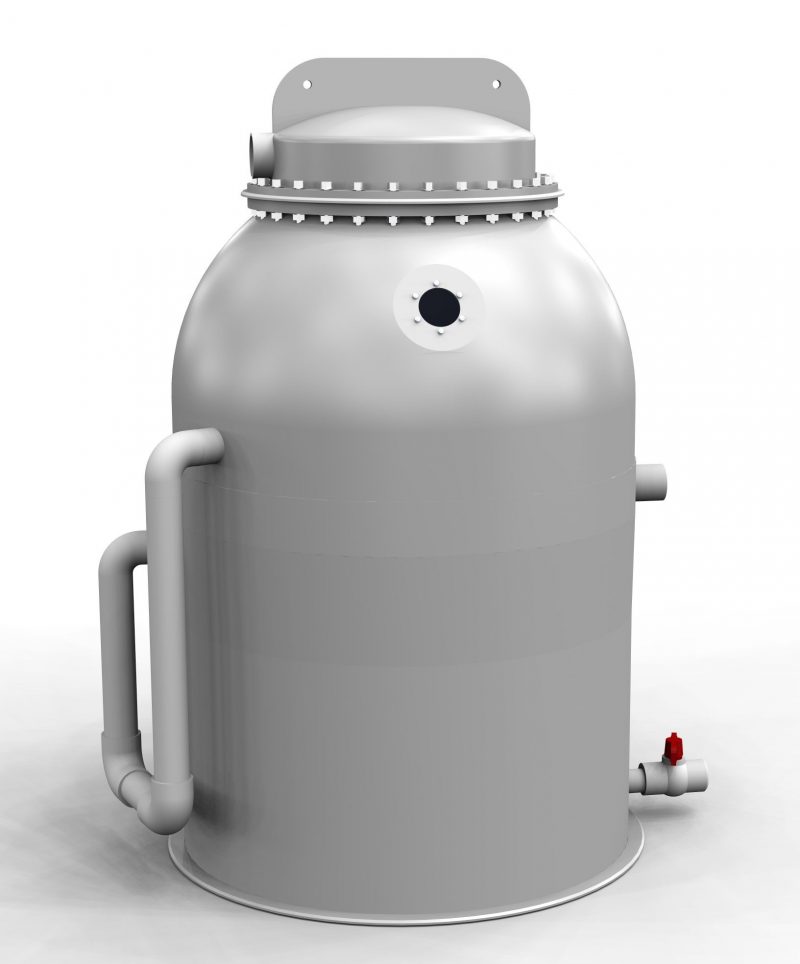High Profile PolyGeyser® Filter (HPPG)
Perfect for Large Volumes of Water Under Pressure
The robust High Profile PolyGeyser (HPPG) can handle high water pressure with finesse.
Introduced in 2015, the High Profile PolyGeyser® (HPPG) Filter is perfect for high volume applications from large aquatic life support systems to wastewater treatment and clarification. Capable of handling large volumes of water under pressure, these PolyGeyser filters gently backwash the media, multiple times a day, to maintain a healthy biofilm. The enhanced nitrification capacity makes this unit ideal for applications with high biofiltration needs.
PolyGeyser filter technology pneumatically backwashes the media regularly, without manual intervention, moving parts, or controllers. This filter provides both mechanical and biological filtration with extremely low water loss by recycling its backwash water and only removing sludge after it has concentrated in the sludge chamber.
This new design pairs the high pressure tolerance and flow rates attained in Propeller Bead® Filter models with the convenience and efficiency of a PolyGeyser. Now you can enjoy the ease of maintenance and save water with a PolyGeyser filter in high pressure applications.
Filter Benefits:
- Standard max pressure of 20 psi
- Inlets and outlets sized for high flow
- Backwash does not harm the biofilm
- Mechanical & biofiltration all-in-one
- Automated backwashing for low maintenance
- Sludge is highly concentrated for low water loss
- Air operated, no moving parts for energy efficient operation
How It Works
Treatment Operation
The High Profile PolyGeyser (HPPG) contain a floating bead media that forms a packed bed at the top of the unit. Water flows into the side of the unit, up through the packed bead bed and discharges from the top of the unit. The packed bead bed captures suspended solids (TSS) as the water courses up through the unit. Treated water discharges from the top of the unit.
While the units are excellent for solids capture, they also function as biological filters. A thin film of bacteria grows on the surface of the media. The bacteria consume dissolved organic contaminants while simultaneously removing solids. This allows the units to reduce BOD and TAN (ammonia) concentrations. They can also be configured to lower nitrogen (TN) concentrations via biological denitrification.
Backflush and Sludge Storage
The HPPG operates using a rapid automatic air-driven backflush. The backflush frequency is controlled by the rate air is inputted into an internal charge chamber. Backflush air is typically supplied by a small compressor. Actual backflush events occur in a matter of seconds and do not interrupt input flow to the unit.
After backflushing, captured solids settle to the bottom of the unit forming a concentrated sludge. Incoming water fills the unit back up seamlessly resuming normal operation without downtime.
The Advantage of Air
The automatic, air-driven backflush makes these very versatile offering a slew of operational advantages and benefits. The speed at the which the backflush is complete allows the units to be backflushed as frequently as the application calls for with no added cost or labor to the operator. As a result, the units can easily be tuned to treat a wide range of TSS concentrations.
The air driven backwash concentrates captured solids minimizing the volume of waste produced. This means less effort and lower disposal costs in comparison to traditional treatment approaches.
HPPG FEATURES
- Low pressure operation
- Automatic operation
- No moving parts/electronic controls
- Minimal maintenance/oversite
- Compact footprint
- Simple integration
Let's Discuss Your Project
From a simple filter to a complete custom system, our engineers can help you find the perfect filtration system for your needs. Get in touch today!






